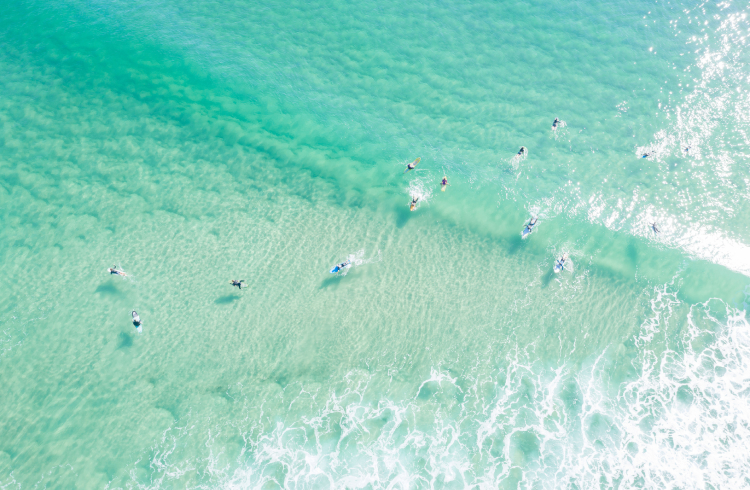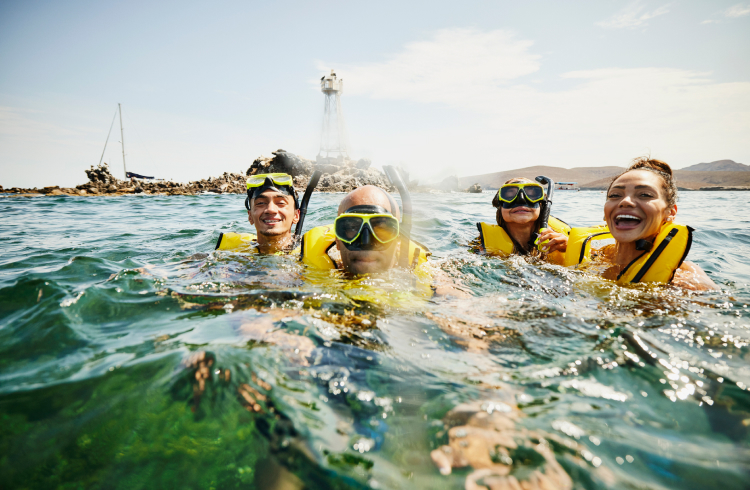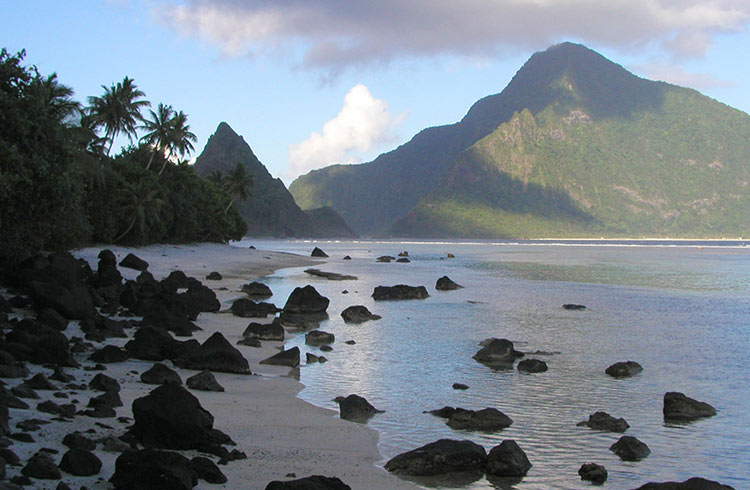Water Safety: How to Stay Safe in the Sea, Ocean, Surf
Swimming ranks as one of the most popular activities for travelers worldwide, but unfamiliar waters come with risks. Here are our tips to keep you safe.
 Photo © Getty Images / Vicki Smith
Photo © Getty Images / Vicki Smith
It’s one of the simplest – and most affordable – activities you can do when you travel: go for a swim. All you need is a swimsuit (or not if you're at a clothing-optional beach), maybe goggles, a mask and snorkel, a bodyboard or a surfboard. But when we travel, we’re often swimming, snorkeling and surfing in unfamiliar water with little or no knowledge of rips, surf conditions and potential risks. Here are a few things to consider before diving in, to keep you safe in the sea.
- Do your research on where to swim
- How to spot and stay safe in a rip
- How to bodysurf safely
- How to boogieboard safely
- Surf lessons & legropes
- How to snorkel safely
- Water safety tips
Do your research on where to swim
Before you dip a toe in the water, scope out your environment to find where you can safely swim. That’s easy at a beach with lifeguards: only swim between the red and yellow flags (bodyboards and “soft” surfboards are usually allowed in this area too), read any signs explaining the day’s weather and water conditions, or ask a friendly lifeguard/lifesaver on duty.
Most beaches are unpatrolled by lifeguards (for example, only four percent of Australia’s estimated 11,500 beaches have professional or volunteer lifeguards), so ask a local where to swim: a fisherman, a family, a surfer. If there’s no one about, be extra cautious, only swim where you can stand and NEVER swim alone or after drinking.
How to spot and stay safe in a rip
According to Surf Life Saving Australia, it is rips, not sharks, that are the number one hazard at Australian beaches – and most people don’t know how to spot a rip. To find (and therefore avoid) a rip, or rip current, look for a narrow band of darker, calm-looking water moving out to sea, away from the beach; it’s basically a saltwater river taking water that’s been pushed to the beach by breaking waves back to the sea.
If you get caught in a rip, stay calm and don’t try to swim against it; you won’t get anywhere and you’ll just get exhausted. Instead, float on your back, go with the flow (the rip won’t pull you under) and signal for help – by raising one arm and calling out to anyone nearby, perhaps a surfer on a board. Another way to escape a rip, if you’re a confident swimmer, is to swim parallel to the beach, towards the breaking waves on either side of the rip, then let the waves wash you safely back to shore.
How to bodysurf safely
Bodysurfing is one of the purest forms of surfing – it’s just you and the wave – but can be risky if the waves are too big or barreling (forming a tube as they break). So start with small, crumbling waves and learn how to duck safely under them as you wade out, to conserve energy. Open your eyes underwater, not just because watching a wave break above you is a beautiful thing but because it’ll show you how deep you need to dive to avoid the turbulence of the whitewater.
To catch a wave, stand in water that’s about mid-thigh deep, in front of an oncoming wave that’s about to break, facing the beach. Just as the wave reaches you, push off the bottom with your feet and keep at least one arm out in front of you to protect yourself from a head or spinal injury when the water gets shallow. If you get dumped, curl up into a ball and wrap your arms over your head as protection.

How to boogieboard safely
The next level up, in surfing terms, is bodyboarding – also called “boogieboarding” after the original Morey Boogie Board, invented in California in the 1970s. Because they’re short, soft and have no fins, bodyboards are generally easier and safer to use than surfboards. You can also ride them between the red and yellow flags at patrolled beaches – adding another layer of safety – and you can start catching waves pretty much as soon as you wade into the water.
Stand in front of a breaking wave or a line of whitewater, facing the beach, and just before the wave/whitewater reaches you, lie on your bodyboard, hold on and enjoy the ride! For more advanced fun, a pair of swimfins will help you get out to deeper water to catch unbroken “green” waves, for a longer ride. Just remember to always wear a wrist leash so you don’t lose your bodyboard and have to swim after it.
Surf lessons & legropes
If you’re a surfing newbie, it’s tempting to just paddle out and give it a go, but a surf lesson or two will teach you more than just how to stand up on your board: you’ll learn how to read the waves and spot rips (which are a surfer’s best friend because they carry you out to the take-off spot like an aquatic escalator) as well as who has right of way on a wave and how to avoid collisions.
Understanding the ocean is a never-ending project, and the more you know, the more confident you’ll become in the water. But one of surfing’s main hazards is strapped to your ankle: your surfboard. Wearing a legrope is now mandatory at some crowded surf spots. Even where it’s not legally required, a legrope is a must. It’ll save you from swimming to the beach every time you wipe out and it prevents your board from hurtling through the line-up and injuring other surfers or swimmers. When paddling out always check there’s no one behind you, learn how to keep hold of your surfboard when you fall off, and make sure you’re physically able to swim to the beach if your legrope breaks and you do have to chase your board.
How to snorkel safely
Under the waves, there’s a whole other world and snorkeling is one of the simplest, most spontaneous ways to explore it. Always go with a buddy (if you’re in a group, pair up so everyone has someone looking out for them) and tell someone where you’re going and when you expect to return.
If you do go alone, stay close to shore and within sight of other people in case you get into trouble. And if you want a closer look at the marine life below, take one deep breath and dive, don’t hyperventilate (taking several fast, deep breaths before diving can lead to a hypoxic blackout, in which you lose consciousness underwater).
If you’re not a strong swimmer, snorkel with a foam noodle or wear a lifejacket, both of which have the added advantage of making you more visible to other people and to passing boats. Stick to designated swimming and snorkeling zones where you can snorkel without worrying about currents or boat traffic.
Water safety tips
- The one-armed wave. If you get into trouble in the water, raise or wave one arm to signal that you need help. Try not to wave to your friends this way, to avoid confusing lifeguards or just someone walking on the beach who might think you’re drowning.
- Who you gonna call? 112 is the standard international emergency number and the main emergency number in Europe, but many countries also have their own emergency numbers: 911 in the Americas, 000 in Australia, 111 in New Zealand and 999 in the UK. You usually can’t send a text to these numbers, but you can call from a locked phone if you have coverage and enough battery charge.
- Refresh your rescue skills. Royal Life Saving Australia has tips on how to carry out a rescue safely. Brushing up on your first-aid and CPR skills is also a good idea. At the very least, remember the CPR formula “30:2” – 30 chest compressions followed by two rescue breaths, repeated until the person starts breathing again or professional help arrives.
- Keep yourself safe. You can’t always rely on others to save you. Worldwide, most people over 15 years of age (55 percent) can’t swim, according to a 2019 Gallup poll of 150,000 people in 142 countries, and that figure jumps to 72 percent in low-income countries, many of which are popular travel destinations.
- Still water safety. In Australia, more people drown in inland waterways than anywhere else, according to Royal Life Saving Australia. The biggest hazards are currents, shallow water and submerged objects such as rocks or logs so NEVER DIVE into water you don’t know the depth of – ALWAYS enter the water feet-first by walking or lowering yourself in, particularly if you can’t see the bottom.
Louise Southerden is a long-time surfer and the author of Surf’s Up: The Girl’s Guide to Surfing and lives by the sea in northern NSW, Australia.
Related articles
Simple and flexible travel insurance
You can buy at home or while traveling, and claim online from anywhere in the world. With 150+ adventure activities covered and 24/7 emergency assistance.
Get a quote


No Comments